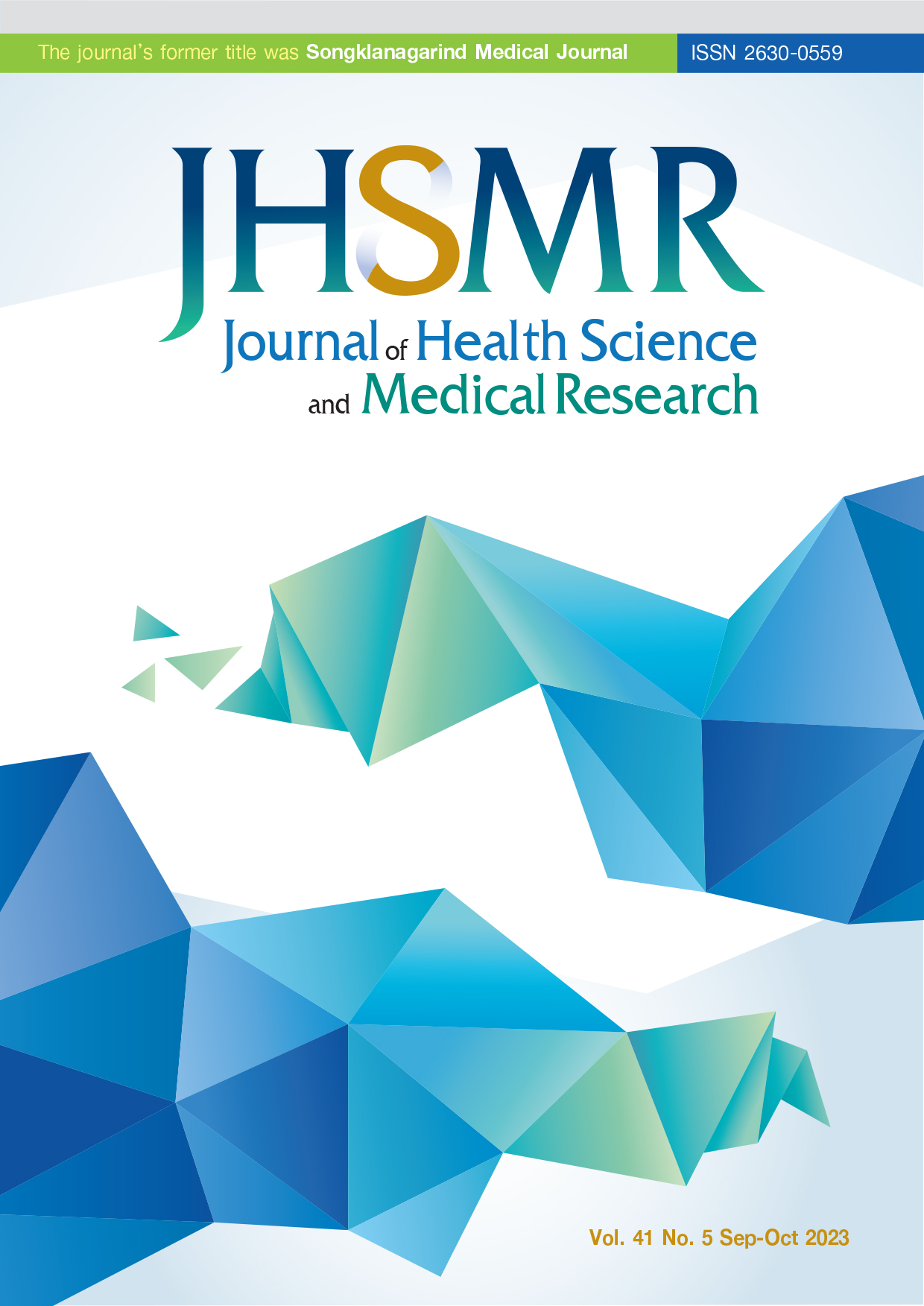Effectiveness of the Alarm System Policy on Reducing Ambulance Response Time in Prehospital Emergency Patient Care
DOI:
https://doi.org/10.31584/jhsmr.2023958Keywords:
alarm system policy, ambulance response time, mortality rate, prehospital emergency patient careAbstract
Objective: Reduction of ambulance response time leads to an increase in positive patient outcomes. Therefore, the aim of this study was to determine whether an accomplished response time within eight minutes could be increased after the introduction of an alarm system policy and to study if the mortality rate would be decreased after the introduction of alarm system policy.
Material and Methods: An interrupted time series was conducted in the collection of code red patients between the following dates: 1st November 2015 and 31st October 2019. The data was collected from the medical records of Maharaj Nakorn, Chiang Mai Hospital. The collected data were separated into: the pre-protocol period (1st November 2015 to 31st October 2017) and the post-protocol period (1st November 2017 to 31st October 2019).
Results: A total of 552 patients were included in the overall analysis. The success rates of response time within eight minutes of patients with code red in the pre-protocol period and post-protocol period were 64.62% and 73.11%, respectively. It was discovered that the success rate was significantly higher (adjusted odd ratio=1.627, 95% confidence interval: [1.017, 2.602]; p-value<0.05) in the post-protocol period versus the pre-protocol period. A decrease in the mortality rate in 24 hours and the mortality rate in the emergency room (ER) was observed in post-protocol period, from the interrupted time series model. However, no significant difference was evident through the process of statistical analysis.
Conclusion: The implementation of the protocol could significantly reduce response time; thus, achieving the 8-minute goal. Hence, this protocol will be able to promote better emergency services in pre-hospital-based care.
References
Byrne JP, Mann NC, Dai M, Mason SA, Karanicolas P, Rizoli S, et al. Association between emergency medical service response time and motor vehicle crash mortality in the United States. JAMA Surg 2019;154:286-93.
Holmén J, Herlitz J, Ricksten SE, Strömsöe A, Hagberg E, Axelsson C, et al. Shortening ambulance response time increases survival in out-of-hospital cardiac arrest. J Am Heart Assoc 2020;9:e017048.
Blackwell TH, Kaufman JS. Response time effectiveness: comparison of response time and survival in an urban emergency medical services system. Acad Emerg Med 2002;9: 288-95.
National Institute for Emergency Medicine. Emergency medical triage protocol and criteria based dispatch. 2nd ed [monograph on the Internet]. Nonthaburi: National Institute for Emergency Medicine; 2013 [cited 2020 Jun 7]. Available from: https://www.niems.go.th/1/Ebook/Detail/272?group=21
Lee S. The role of centrality in ambulance dispatching. Decision Support Systems 2012;54:282-91.
Jermyn BD. Reduction of the call-response interval with ambulance base paging. Prehosp Emerg Care 2000;4:318-21.
Gauss T, Ageron FX, Devaud ML, Debaty G, Travers S, Garrigue D, et al. Association of prehospital time to in-hospital trauma mortality in a physician-staffed emergency medicine system. JAMA Surg 2019;154:1117-24.
Downloads
Published
How to Cite
Issue
Section
License

This work is licensed under a Creative Commons Attribution-NonCommercial-NoDerivatives 4.0 International License.
























